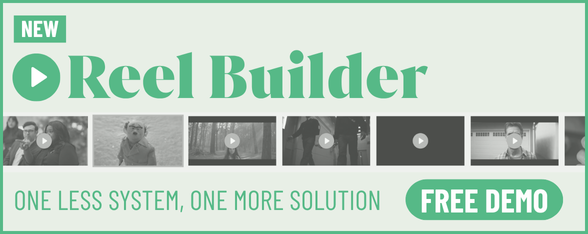
Katie O’Grady on Bringing Portlandia Comedy to Shibumi Shade

After spending years as an actor on a cult TV classic, Katie turned her sights to directing great comedy TV commercials. One of her recent campaigns for Shibumi Shade scored a near flawless completion rate (CTR) in paid digital media. The CCO of Odysseus Arms, Franklin Tipton, asks her to share some of her past experience, guidance, and knowledge on the power of humour in branding.
Q> You started as a comic actor on the cult hit Portlandia. How did that experience affect your craft?
Katie> On Portlandia, I learned that the funniest moments usually happen about three seconds after the script ends. It taught me to listen, trust my scene partners, and let a beat hang long enough for the magic (or awkwardness) to land. We had days where a scripted 'Congratulations' turned into a three-minute deadpan about babies modelling, and it was always gold. As a director, I protect that space for actors, because brands win big when the audience feels like they’re watching something alive, not just delivered.
Q> Give us any creative/humour 'secret sauce' from the show that we can use over here in adland. What’s your process for developing 'funny'?
Katie> Build a world that’s so real the absurd feels normal. Portlandia didn’t need laugh tracks; the humour came from watching someone argue about locally sourced chicken like it was moral code. In advertising, I start with relatable truth, then twist the volume up. And I always keep one take 'wild,' no matter how buttoned-up the concept, because that’s usually the one people talk about in the edit. In prep, I obsess over performance beats and rhythm. On set, I create a space where talent feels free to try the unexpected. The result is humour that feels effortless, the kind that makes audiences feel like they’re in on something.
Q> Talk to today’s CMOs: Tell them about the power of comedy in advertising.
Katie> Comedy is brand charisma. It’s the quickest way to say, 'We’re confident, we’re human, and we’re not here to bore you to death.' People don’t quote your brand guidelines—they quote the funny line from your spot. And in an era where everyone’s scrolling past you, funny buys you another three seconds, which is basically an eternity in digital time. You have to be sure to cast very skilled actors too; audiences can tell when someone is selling. It's a fine line, and every beat has to be measured or you lose them.
Q> When a brand chooses to use humour, what are they saying to consumers?
Katie> They’re saying: We’re secure enough to make fun of ourselves. That’s leadership. It’s also an invitation to 'Come sit with us. We’re the fun table.' And let’s be honest—everybody wants to sit at the fun table. They’re also signalling that they’re not afraid to have a human voice and that they trust their audience to get the joke. That trust builds loyalty, but more importantly it builds laughter, and everyone remembers a good time.
Q> Explain why humour is so powerful to marketers.
Katie> There are only two reliable ways to move people: Make them laugh or make them cry. Crying is a harder sell on a Tuesday at 2 p.m. Laughter is instant, it bonds people, and it makes them want to share. Plus, shared laughs release bonding hormones and sharpen creative thinking. That’s why a well-placed joke isn’t just funny … it’s strategy.
Q> Lately, even B2B brands are leaning into humour. Isn’t humour a great way to differentiate a brand from the dull, humourless competition?
Katie> Absolutely. I’ve done work in traditionally 'serious' spaces, and the minute you add humour, you’re the outlier everyone notices. It’s like showing up to a black-tie dinner in a gold tracksuit—people might gasp, but they’re definitely watching. In B2B, that’s the win. The lower the expectation for fun, the more disruptive the laugh, and the more your brand stops being a vendor and starts being a personality.
Q> How do you navigate cultural sensitivities with humour?
Katie> By aiming the joke up, not down. Punching down is lazy. Punching up, or better yet, punching sideways, keeps humour inclusive and clever. My rule: If it wouldn’t make you want to sit next to me at lunch, it’s not going in. Casting is crucial as well; character-driven performances with a measure of truth are critical. I focus on shared experiences and observations, so the audience feels seen rather than singled out.
Q> In a social-media driven 'attention economy,' what’s your take?
Katie> The scroll is ruthless. You have 1.5 seconds to get a reaction before someone moves on to a cat video. Gen z typically disengages from ads within 1.3 seconds; so yeah, humour better land fast. Comedy is the ultimate hook—it gets them to stop, smile, and actually watch. The Shibumi 'Lounge Harder' campaign worked because it didn’t feel like an ad. It felt like a little beachside inside joke you wanted to be part of.














